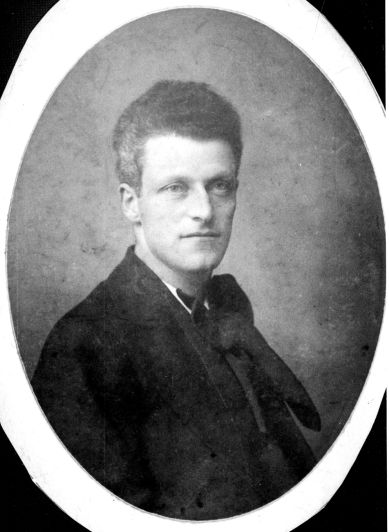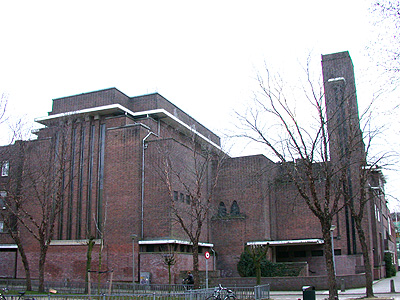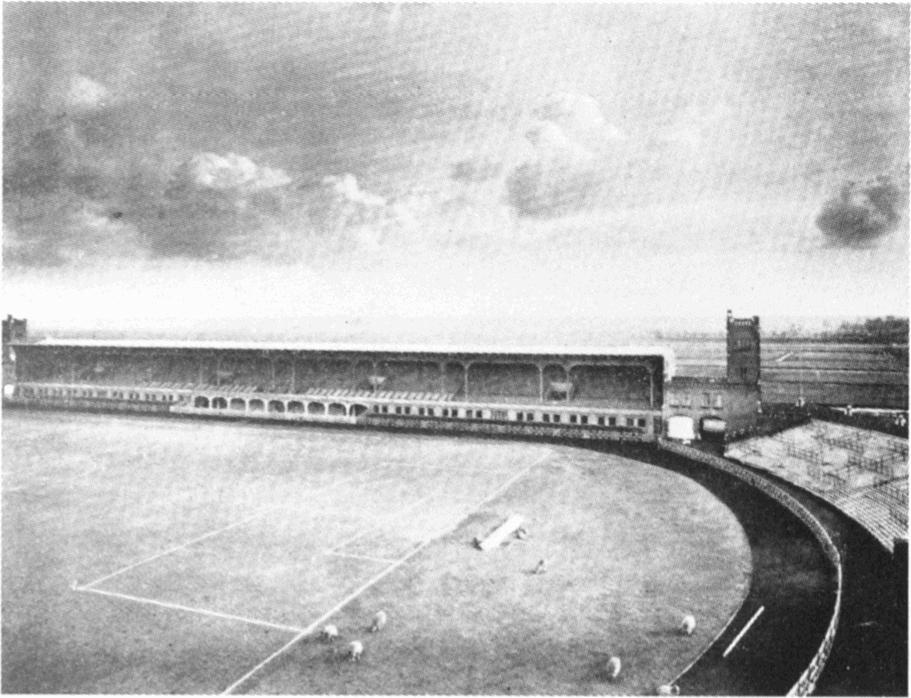|
Harry Elte
Harry Elte (born with the name Hartog Elte, Amsterdam, 3 September 1880 – Theresienstadt, 1 April 1944) was a Jewish-Dutch architect. His style is that of the Amsterdam School. Elte was educated by Berlage. He designed several synagogues and villa's in the Netherlands, as well as a football stadium. For his parents, he designed grave stones on the Jewish cemetery of Muiderberg. During World War II he was deported and died in the Theresienstadt concentration camp Theresienstadt Ghetto was established by the SS during World War II in the fortress town of Terezín, in the Protectorate of Bohemia and Moravia ( German-occupied Czechoslovakia). Theresienstadt served as a waystation to the extermination ca .... References External links Jewish architects 1880 births 1944 deaths Architects from Amsterdam Dutch Jews Dutch people who died in the Theresienstadt Ghetto 20th-century Dutch architects {{Netherlands-architect-stub ... [...More Info...] [...Related Items...] OR: [Wikipedia] [Google] [Baidu] |
Harry Elte
Harry Elte (born with the name Hartog Elte, Amsterdam, 3 September 1880 – Theresienstadt, 1 April 1944) was a Jewish-Dutch architect. His style is that of the Amsterdam School. Elte was educated by Berlage. He designed several synagogues and villa's in the Netherlands, as well as a football stadium. For his parents, he designed grave stones on the Jewish cemetery of Muiderberg. During World War II he was deported and died in the Theresienstadt concentration camp Theresienstadt Ghetto was established by the SS during World War II in the fortress town of Terezín, in the Protectorate of Bohemia and Moravia ( German-occupied Czechoslovakia). Theresienstadt served as a waystation to the extermination ca .... References External links Jewish architects 1880 births 1944 deaths Architects from Amsterdam Dutch Jews Dutch people who died in the Theresienstadt Ghetto 20th-century Dutch architects {{Netherlands-architect-stub ... [...More Info...] [...Related Items...] OR: [Wikipedia] [Google] [Baidu] |
Jewish Cemetery
A Jewish cemetery ( he, בית עלמין ''beit almin'' or ''beit kvarot'') is a cemetery where Jews are buried in keeping with Jewish tradition. Cemeteries are referred to in several different ways in Hebrew, including ''beit kevarot'' (house of sepulchers), ''beit almin'' (eternal home) or ''beit olam aba'' (house of afterlife), the ''beit chayyim'' (house of the living) and ''beit shalom'' (house of peace). The land of the cemetery is considered holy and a special consecration ceremony takes place upon its inauguration. According to Jewish tradition, Jewish burial grounds are sacred sites and must remain undisturbed in perpetuity. Establishing a cemetery is one of the first priorities for a new Jewish community. A Jewish cemetery is generally purchased and supported with communal funds. Placing stones on graves is a Jewish tradition equivalent to bringing flowers or wreaths to graves. Flowers, spices, and twigs have sometimes been used, but the stone is preferred ... [...More Info...] [...Related Items...] OR: [Wikipedia] [Google] [Baidu] |
Dutch Jews
The history of the Jews in the Netherlands began largely in the 16th century when they began to settle in Amsterdam and other cities. It has continued to the present. During the occupation of the Netherlands by Nazi Germany in May 1940, the Jewish community was severely persecuted. The area now known as the Netherlands was once part of the Spanish Empire but in 1581, the Northern Dutch provinces declared independence. A principal motive was the wish to practice Protestant Christianity, then forbidden under Spanish rule. Religious tolerance was effectively an important constitutional element of the newly independent state. This inevitably attracted the attention of Jews who were religiously oppressed in different parts of the world. In pursuit of religious freedoms, many Jews migrated to the Netherlands where they flourished. During the Nazi occupation of the Netherlands in World War II, approximately 75 percent of the Jewish population of the Netherlands was murdered in the ... [...More Info...] [...Related Items...] OR: [Wikipedia] [Google] [Baidu] |
Architects From Amsterdam
An architect is a person who plans, designs and oversees the construction of buildings. To practice architecture means to provide services in connection with the design of buildings and the space within the site surrounding the buildings that have human occupancy or use as their principal purpose. Etymologically, the term architect derives from the Latin ''architectus'', which derives from the Greek (''arkhi-'', chief + ''tekton'', builder), i.e., chief builder. The professional requirements for architects vary from place to place. An architect's decisions affect public safety, and thus the architect must undergo specialized training consisting of advanced education and a ''practicum'' (or internship) for practical experience to earn a license to practice architecture. Practical, technical, and academic requirements for becoming an architect vary by jurisdiction, though the formal study of architecture in academic institutions has played a pivotal role in the development of the ... [...More Info...] [...Related Items...] OR: [Wikipedia] [Google] [Baidu] |
1944 Deaths
Events Below, the events of World War II have the "WWII" prefix. January * January 2 – WWII: ** Free French General Jean de Lattre de Tassigny is appointed to command French Army B, part of the Sixth United States Army Group in North Africa. ** Landing at Saidor: 13,000 US and Australian troops land on Papua New Guinea, in an attempt to cut off a Japanese retreat. * January 8 – WWII: Philippine Commonwealth troops enter the province of Ilocos Sur in northern Luzon and attack Japanese forces. * January 11 ** President of the United States Franklin D. Roosevelt proposes a Second Bill of Rights for social and economic security, in his State of the Union address. ** The Nazi German administration expands Kraków-Płaszów concentration camp into the larger standalone ''Konzentrationslager Plaszow bei Krakau'' in occupied Poland. * January 12 – WWII: Winston Churchill and Charles de Gaulle begin a 2-day conference in Marrakech. * January 14 – WWII: Sovi ... [...More Info...] [...Related Items...] OR: [Wikipedia] [Google] [Baidu] |
1880 Births
Year 188 (CLXXXVIII) was a leap year starting on Monday of the Julian calendar. At the time, it was known in the Roman Empire as the Year of the Consulship of Fuscianus and Silanus (or, less frequently, year 941 ''Ab urbe condita''). The denomination 188 for this year has been used since the early medieval period, when the Anno Domini calendar era became the prevalent method in Europe for naming years. Events By place Roman Empire * Publius Helvius Pertinax becomes pro-consul of Africa from 188 to 189. Japan * Queen Himiko (or Shingi Waō) begins her reign in Japan (until 248). Births * April 4 – Caracalla (or Antoninus), Roman emperor (d. 217) * Lu Ji (or Gongji), Chinese official and politician (d. 219) * Sun Shao, Chinese general of the Eastern Wu state (d. 241) Deaths * March 17 – Julian, pope and patriarch of Alexandria * Fa Zhen (or Gaoqing), Chinese scholar (b. AD 100) * Lucius Antistius Burrus, Roman politician (executed) * Ma ... [...More Info...] [...Related Items...] OR: [Wikipedia] [Google] [Baidu] |
Jewish Architects
Jews ( he, יְהוּדִים, , ) or Jewish people are an ethnoreligious group and nation originating from the Israelites Israelite origins and kingdom: "The first act in the long drama of Jewish history is the age of the Israelites""The people of the Kingdom of Israel and the ethnic and religious group known as the Jewish people that descended from them have been subjected to a number of forced migrations in their history" and Hebrews of historical Israel and Judah. Jewish ethnicity, nationhood, and religion are strongly interrelated, "Historically, the religious and ethnic dimensions of Jewish identity have been closely interwoven. In fact, so closely bound are they, that the traditional Jewish lexicon hardly distinguishes between the two concepts. Jewish religious practice, by definition, was observed exclusively by the Jewish people, and notions of Jewish peoplehood, nation, and community were suffused with faith in the Jewish God, the practice of Jewish (religious) ... [...More Info...] [...Related Items...] OR: [Wikipedia] [Google] [Baidu] |
Stanford University Press
Stanford University Press (SUP) is the publishing house of Stanford University. It is one of the oldest academic presses in the United States and the first university press to be established on the West Coast. It was among the presses officially admitted to the Association of American University Presses (now the Association of University Presses) at the organization's founding, in 1937, and is one of twenty-two current member presses from that original group. The press publishes 130 books per year across the humanities, social sciences, and business, and has more than 3,500 titles in print. History David Starr Jordan, the first president of Stanford University, posited four propositions to Leland and Jane Stanford when accepting the post, the last of which stipulated, “That provision be made for the publication of the results of any important research on the part of professors, or advanced students. Such papers may be issued from time to time as ‘Memoirs of the Leland Sta ... [...More Info...] [...Related Items...] OR: [Wikipedia] [Google] [Baidu] |
Muiderberg
Muiderberg () is a village in the municipality of Gooise Meren in the Netherlands. It lies about 6 km north of Bussum and 2 km west of Naarden, adjacent to the Naarderbos. Geography Muiderberg is in the east of the municipality of Muiden in the southeast of the province of North Holland in the west of Netherlands. It is situated on the border of the IJmeer to the north and the Naarderbos to the east. It lies about 6 km north of Bussum and 2 km west of Naarden. Demography In 2016 the village of Muiderberg had 1605 inhabitants. The built-up area of the town was 0.61 km², and contained 750 residences.(In DutchKerncijfers wijken en buurten 2016(CBS) accessed August 21, 2020 The statistical area "Muiderberg", which also can include the peripheral parts of the village, as well as the surrounding countryside, has a population of around 3140.Statistics Netherlands (CBS)''Statline: Kerncijfers wijken en buurten 2003-2005'' As of 1 January 2005. Jewish ce ... [...More Info...] [...Related Items...] OR: [Wikipedia] [Google] [Baidu] |
Old Stadion (Amsterdam)
The Oude Stadion (Old Stadium), officially known as Het Nederlandsch Sportpark (The Dutch Sports Park), and colloquially known as the Stadion (until 1928), was a multi-purpose sports stadium located in Amsterdam in the Netherlands. The stadium was built after the design by Harry Elte, with which he had won the contest for a national stadium in 1912. The stadium was completed in 1914. For some time it was the only stadium with brick stands in the country. Prior to the construction of the Olympic Stadium used for the 1928 Summer Olympics, it was the primary stadium used for the city until the 1928 Games. This was to the fact that the stadium could not handle track running and track cycling events though it could accommodate football games, seating 29,000. The addition of running lanes and a cycling track would have reduced the capacity to 17,000. Despite this, the old stadium did host some of the field hockey and football events for the 1928 Games. The stadium was demolishe ... [...More Info...] [...Related Items...] OR: [Wikipedia] [Google] [Baidu] |
Synagogue
A synagogue, ', 'house of assembly', or ', "house of prayer"; Yiddish: ''shul'', Ladino: or ' (from synagogue); or ', "community". sometimes referred to as shul, and interchangeably used with the word temple, is a Jewish house of worship. Synagogues have a place for prayer (the main sanctuary and sometimes smaller chapels), where Jews attend religious Services or special ceremonies (including Weddings, Bar Mitzvahs or Bat Mitzvahs, Confirmations, choir performances, or even children's plays), have rooms for study, social hall(s), administrative and charitable offices, classrooms for religious school and Hebrew school, sometimes Jewish preschools, and often have many places to sit and congregate; display commemorative, historic, or modern artwork throughout; and sometimes have items of some Jewish historical significance or history about the Synagogue itself, on display. Synagogues are consecrated spaces used for the purpose of Jewish prayer, study, assembly, a ... [...More Info...] [...Related Items...] OR: [Wikipedia] [Google] [Baidu] |






.jpg)